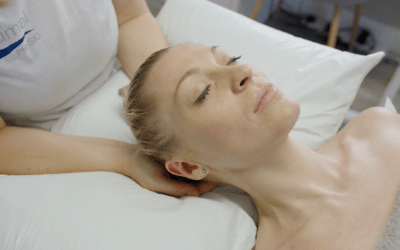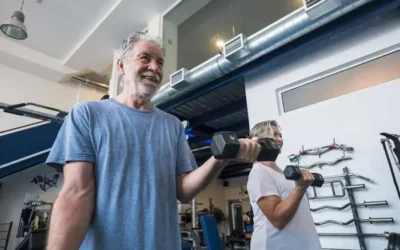Being a physio and being responsible for elite level athletes and their injuries and subsequent performance, I am often asked for advice on managing an injury that someone has invariably encountered recently in their training.
While each injury is different, these top 10 tips or areas that need to be considered are:
1.) Set realistic goals
This has to be age and stage appropriate. Goals need to be measurable and have to be realistic. Often the mistake I see is the goal is way to unrealistic and someone hurts themselves trying too hard to achieve the impossible for them. Also if you plan for success it much easier to manage psychologically and increases our chances of being successful, step by step. If you measure something it will improve!
2.) Understand your limitations
If you are a 45 year old father of 3, then respect that your body will not be able to do what you did when you were 25. As long as you understand what physical limitations you may have, then setting achievable goals becomes easier.We like to help you achieve your goals, but its important that you gain strength and control gradually. If you try to do too much too quickly this is when structures such as muscles, ligaments and joints struggle to cope with the new forces and ultimately fail. This leads to pain. Time is required for all successful training plans.
3.) Take it slowly. Be patient
Getting fit is a lifestyle choice that needs time to implement. By setting small benchmark goals, the much larger goal will be easier to achieve. For example, in body composition courses they teach us that losing body fat in the regular person is a slow process. Aiming for 250gms per week of fat loss is actually more realistic than losing 2-3 kg in a week – after 6 months you may lose up to 6 kg though, so keep at it! Also don’t worry about total weight its your body fat percentage which is the relevant number. If your not sure what your is and you want to know, why not book in for a body composition assessment.
4.) Stretch 1:2 ratio
Spend more time stretching the major muscle groups, particularly the ones that attach onto the pelvis – the hamstrings, hip flexors, lower back, piriformis, and glutes. These are key areas that contribute to our injury profiles as we get older. For every 10 minutes of training per week, you should do 5 minutes of stretching. Training will make you tight, so stretching will help relax muscles post-training as well as acting as a recovery modality. Post activity hold a stretch for 30seconds. Pre-activity dynamic stretching is preferred but static stretching for certain issues is acceptable. Just reduce the stretch time to 7-8 seconds. Using a foam roller can also help maintain flexibility and blood flow to the muscles.
5.) Core strength
Not abdominal curls but more functional bracing type exercises are necessary. Planks, side planks and bird-dogs are the type of core exercises I am talking about. Do 2-3 types of these sessions per week.Try to vary your exercises and focus on reverse curls or dynamic core exercises which are specific for your lifestyle, sport or activity.
6.) Balance/stability
Similarly we will all get benefits from doing some manner of balance training. Standing on a BOSU ball on one leg or balance board has been shown to stimulate the receptor to muscle systems that control our bodies in locomotion and all movements.This generates good reaction speeds to prevent injury ankle injuries.
7.) A balanced gym programme
This refers to having balance in the exercises we choose ie train the chest and also your back. Remember, left to right symmetry is just as important as front to back symmetry. In the lower body, balancing hip dominant posterior chain with knee dominant type movements, and in the mid section balance ventral exercises (abdominals) with dorsal (back) exercises.Avoid training the mirror muscles alone, squating and deadlifts will activate your core and also release growth hormones which will add muscle, reduce body fat and benefit your whole body. Try to use functional exercises and avoid machine based exercises as this will also ensure your control and proprioception is developed. technique is more important than weight as your strength gains initially will come through developing your signal from your nervous system to your muscles.
8.) Appropriate footwear
If you want to squat in your bare-feet go for it. But don’t be surprised if you end up with ankle and knee problems as a result. Have a chat with our podiatrist Andrew Brown or one of our physiotherapist’s about what may be the best shoes for you whether it be for running, gym work or body combat classes in the studio.
9.) Sleep
Most of us need 7 or 8 hours per night of quality sleep. We can function on 4-5 hours per night but if our diet is poor and other stress factors are high, we can fall in a heap very quickly and end up with illness or injury.Sleep is when your body repairs, reduces your stress hormones and is the biggest factor in recovery. If your fatigued your body is more likely to suffer an injury.
10.) Hydration
This is the one area that is so easy to fix but the majority of us ignore. Make sure you drink 3 litres of filtered water per day if your active – don’t include tea, coffee and diet coke! Water is an essential component of our bodies and the only way we detoxify ourselves is through our kidneys. So drink up! 2 litres is the normal level for a sedentary individual, when you start training or exercising you need to increase your fluid intake. Its also just as important, if not more important, to take in fluids when exercising in the cold weather as it is in a warmer climate. An easy way to measure is weigh yourself before and after exercise. Any weight loss over 2 hours exercising is water. Lose 1kg, then drink 1 litre of water. Also electrolytes are only beneficial for exercising at high intensities for 90minutes or more. If your just in the gym for 45-60min. Ditch the sports drink and its sugar your body doesn’t require!
Whatever your objectives, I’d highly recommend you incorporate at least some of these tips into your fitness regime. Injuries can ruin all your hard work in an instant, and heeding this advice will help you reduce your likelihood of suffering an injury.
How Diabetes Impacts Your Health and Injury Recovery
How Diabetes Impacts Your Health and Injury Recovery Diabetes and cardiovascular disease (CVD) are closely linked, with diabetes being a significant risk factor for heart attacks and strokes due to chronic hyperglycaemia, inflammation, and associated metabolic...



0 Comments